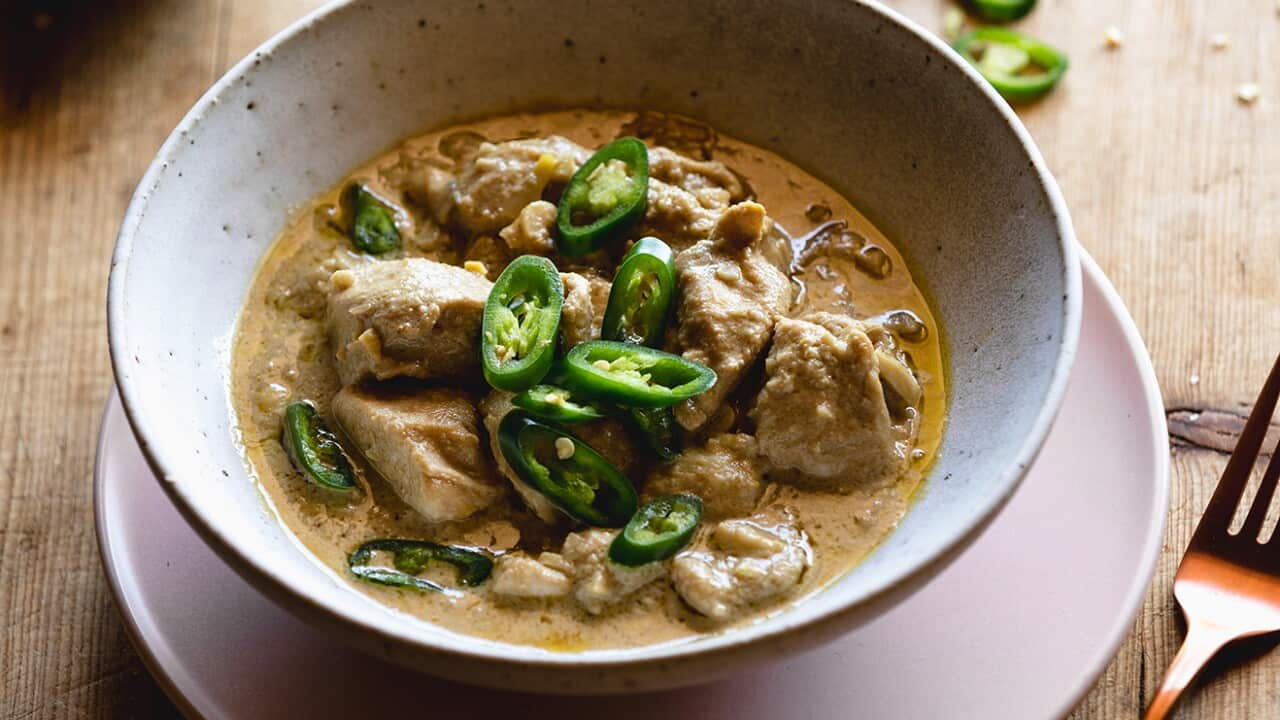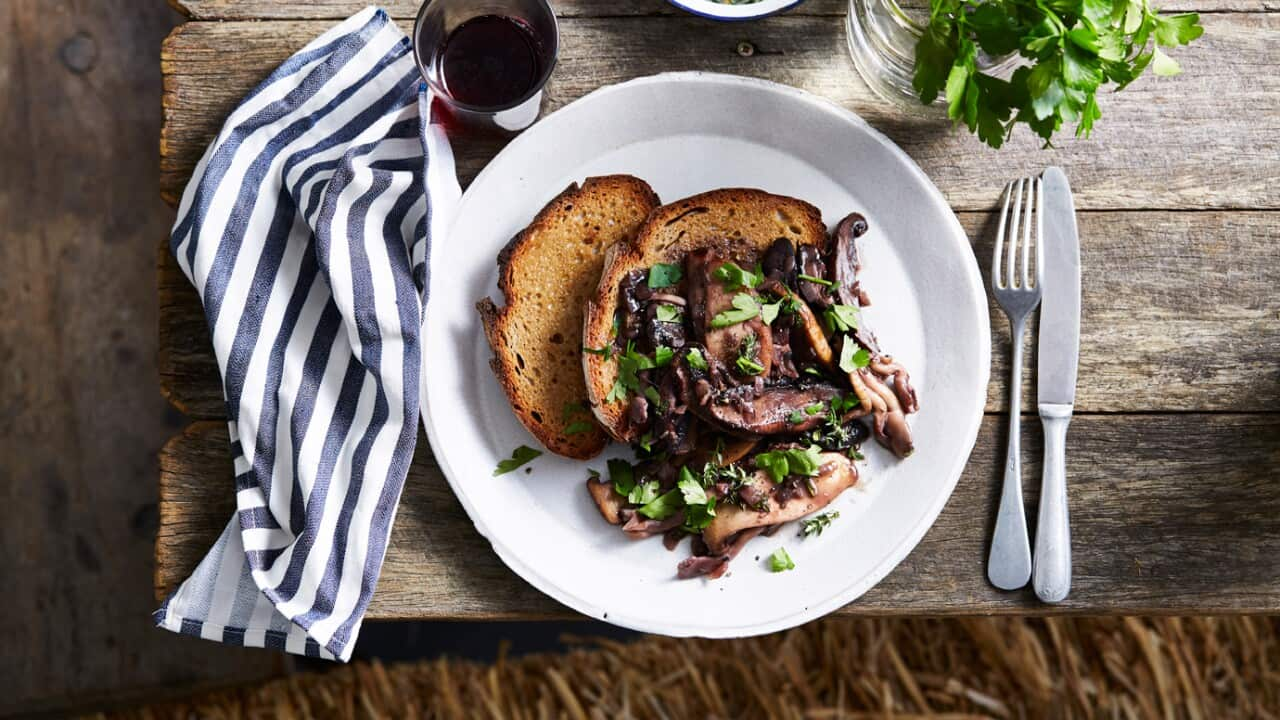As we head towards the colder months of the year and spend more time indoors away from the sun’s rays, the risk that our vitamin D levels will fall below par increases.
If can’t get enough daily sunlight, you can take a vitamin D supplement. Or, you can eat the only food product in the fresh produce aisle of your supermarket that has the potential to deliver your daily dose of vitamin D: mushrooms.
Surprisingly, we’ve discovered that mushrooms are a potential source of vitamin D.
The new SBS series, Michael Mosley’s Secrets of Your Food, looks at the humble mushroom and its relationship with vitamin D. In episode one, ethnobotanist and show co-host James Wong goes to Bulgaria to discover why bathing mushrooms in sunlight might help you to get a vitamin D boost, which can in turn help you to absorb calcium more efficiently.
“Surprisingly, we’ve discovered that mushrooms are a potential source of vitamin D,” says Wong in the show, airing on SBS on Wednesday 16 May at 7.30pm.
He visits a local farming family living in Bulgaria’s Rhodope mountain ranges, to observe how they harness mushrooms for vitamin D and store the vegetable during the winter months when long periods of sunshine are lacking.
“Just like us, [mushrooms] need this vitamin to survive and they use it as a protection from the sun’s harmful rays,” he says.
“The sunlight falling on a mushroom turns it into a vitamin D factory. They use a chemical similar to cholesterol called ergosterol, which reacts with sunlight to make vitamin D.”
Wong joins a local farmer to slice Portobello mushrooms and place them on a flat surface in the direct line of sunlight. “There’s something miraculous about what we are doing here,” he says, “because these mushrooms that are freshly picked from the dark forest floor don’t really contain that much vitamin D.
“But, putting them out in this intense UV light and the mushrooms, which are still alive, start to react by churning out vitamin D. If you put them gill-side up, the surface area exposed to the sun increases, and they produce even more [vitamin D].” The national organisation, also confirms that mushrooms naturally produce vitamin D when they are exposed to sunlight or another source of UV light.
The national organisation, also confirms that mushrooms naturally produce vitamin D when they are exposed to sunlight or another source of UV light.

Mushrooms bathing in the Bulgarian sun, as James Wong helps a local farmer to enrich the vegetable with vitamin D. (Still from Michael Mosley's Secrets Of Your Food) Source: Getty Images
“Through the action of sunlight, they convert their abundant ergosterol to ergocalciferol (vitamin D2),” the organisation states on its website.
If you put them gill-side up, the surface area exposed to the sun increases, and they produce even more [vitamin D].
A goes further to say that when mushrooms are exposed to UV radiation, provitamin D2 is converted to previtamin D2.
Once formed, previtamin D2 rapidly changes to vitamin D2 in a similar way hat previtamin D3 changes to vitamin D3 in human skin.
It also says shiitake mushrooms not only produce vitamin D2 but also produce vitamin D3 and vitamin D4.
Although it’s uncommon for farmers to put mushrooms in the light, Australian Mushrooms say the store-bought vegetable can have 1-5 mcg of vitamin D per 100g. Meanwhile, wild mushrooms in Europe may contain 2-40 mcg of vitamin D/100g.
According to a position statement on vitamin D published by the , when sun exposure is minimal, people aged 70 years or over should get at least 600 IU (15 mcg) a day.
Meanwhile, the US-based estimates that 84 grams of raw brown mushrooms exposed to UV light give 1072 IU – which is much more than our recommended daily dose of vitamin D.
The same quantity of raw Portobello and maitake both offered around 943 IU when exposed to UV light. White mushrooms produced 879 IU when exposed. Meanwhile, 84 grams of oyster, shitake or enoki mushrooms created much smaller amounts of vitamin D, from four to 24 IU.
It's estimated that around may have a mild, moderate or even severe vitamin D deficiency.
It’s a tasty way to get vitamin D through those dark winter months.
Wong says that it only takes a few hours out in the sun for a couple of Portobello mushrooms to create enough vitamin D to provide us with our recommended daily dose.
“Dry them and it stays locked away in the mushroom for up to a year," adds Wong. "It’s a tasty way to get vitamin D through those dark winter months.”
However, Australian Mushrooms advise not to keep mushrooms out in the sun for an extended period of time because they will shrivel and colour. A short burst of UV light just after harvesting should produce enough vitamin D and preserve the appearance of the mushroom.
The new three-part series, Michael Mosley's Secrets Of Your Food, starts on SBS on Wednesday 16 May at 7.30pm and continues each week at the same time on SBS. The documentary will also be available to view on after broadcast.

![“Just like us, [mushrooms] need this vitamin to survive and they use it as a protection from the sun’s harmful rays,” says James Wong.](https://images.sbs.com.au/dims4/default/a0bf680/2147483647/strip/true/crop/2121x1193+0+16/resize/1280x720!/quality/90/?url=http%3A%2F%2Fsbs-au-brightspot.s3.amazonaws.com%2Fdrupal%2Ffood%2Fpublic%2Fgettyimages-873605250.jpg&imwidth=1280)







